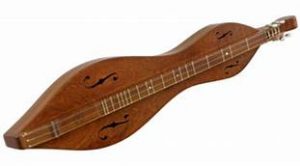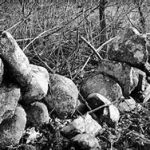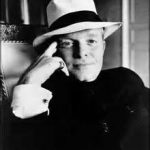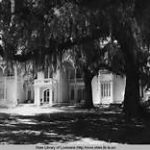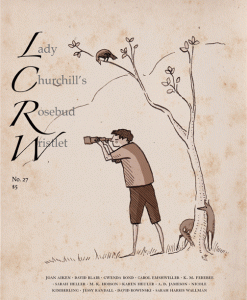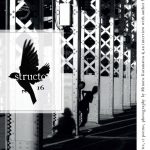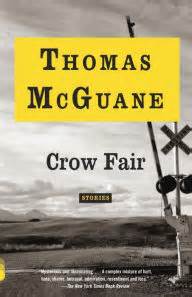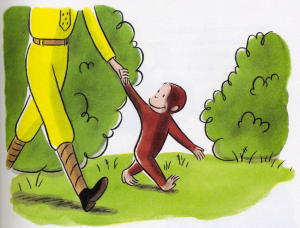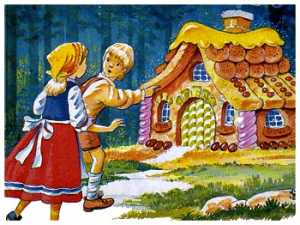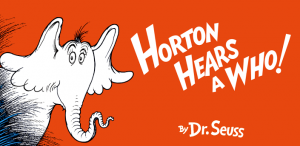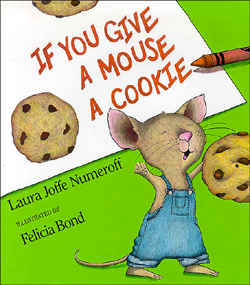 Last Saturday I had been in the woodlot quartering a shagbark brought down last year because – long assailed, perhaps even “farmed” for beetles, by pileateds – it was riddled with impressive holes. Air cold, wood old and mazed – I had anticipated pleasant work. But the tree still had heart and vigor in sections, and I tired quickly. Indoors, I found a message noting the death of Irish poet John Montague, with whom I spent much time in the 90’s and at the beginning of this century. He was about sixty when I met him and 87 when he passed, but his energy and curiosity, capacity for hard work and zest for life prevented me from ever seeing him as older than when I met him. He was a man who had struggled with himself as much as external forces; I admired his work and loved his company.
Last Saturday I had been in the woodlot quartering a shagbark brought down last year because – long assailed, perhaps even “farmed” for beetles, by pileateds – it was riddled with impressive holes. Air cold, wood old and mazed – I had anticipated pleasant work. But the tree still had heart and vigor in sections, and I tired quickly. Indoors, I found a message noting the death of Irish poet John Montague, with whom I spent much time in the 90’s and at the beginning of this century. He was about sixty when I met him and 87 when he passed, but his energy and curiosity, capacity for hard work and zest for life prevented me from ever seeing him as older than when I met him. He was a man who had struggled with himself as much as external forces; I admired his work and loved his company.
Bris-mo-croi, as they say in the Irish: “It breaks my heart.”
 I’m going to post two blog posts about John, this first one more personal, anecdotal, the second celebrating his substantial achievements as a poet, though he was also a writer of stories, novels, reviews, guide books, manifestos, all manner of literary journalism. Still, in the marrow, he was a poet, oft overlooked as the bridge between Patrick Kavanagh and Heaney, a rustic who could turn a sonnet silver, a Jungian who spoke the idiolect of Ulster turf cutters.
I’m going to post two blog posts about John, this first one more personal, anecdotal, the second celebrating his substantial achievements as a poet, though he was also a writer of stories, novels, reviews, guide books, manifestos, all manner of literary journalism. Still, in the marrow, he was a poet, oft overlooked as the bridge between Patrick Kavanagh and Heaney, a rustic who could turn a sonnet silver, a Jungian who spoke the idiolect of Ulster turf cutters.
A voice soft as a summer mist in Galway, a shambling gait, a smile quick but a touch restrained, a high sense of irony, devotion to his wife, novelist Elizabeth Wassell, a badger tenacity when questions were raised – John was at once worldly and homely, stellar and earthy, quick and deliberate, equally a lover of a clever makeshift style and a connoisseur of Parisian rose windows. He was sensual and randy, but he would have me turn the car toward a pub as the hour of six approached, as he did not wish to miss hearing the angelus rung on the radio. He knew his haute cuisine but also declared, “The potato is your man. He’ll not let you down,” as he pocketed leftover spuds from our table in a pricey Breton restaurant. He was great craic.
On two occasions I spent a couple of weeks with John and Elizabeth in Letter Cottage, Ballydehob, West Cork. We strolled together, sampled lamb (“almost delectable, even this far from spring”), sang ballads (our voices “tractor axles in want of oil”), and I drove them hither and yon. Neither could operate a car back then, and they often made it the three miles to the village on shank’s mare. Once I drove them to Dublin for an award ceremony and fund raising launch for a new magazine. It would have been enough to hear his stories of the locals like Declan Handbag and Declan Wildlife (two locals, one a gay bon vivant, the other a forest ranger), but John had written the first comprehensive tourist guide of Ireland, and he was forever directing me to turn left at those beeches or reverse a hundred meters to a near-invisible stone. He must have known every rath and tower, holy well and abbey ruin in the country, and I saw many of them.
 I should say that the pilgrimage to Dublin engraved John and Eliza in my mind because I came down with a monstrous sinus infection just as we reached the Black Pool, early seat of Viking trespassers. They housed me in the holy Arts Club and tended me while I produced enough mucous to make Joyce’s “snotgreen sea” seem a commonplace. I survived to attend both a wild pub argument between Derek Mahon and some other poets, my first real taste of Irish wit and enmity loosed at gale force, and an elegant cocktail party with celebrities and outlaws mingling in fierce competition to become “the most interesting man in the world.” (I believe the victor was Michael D. Higgins, poet and socialist pol then, President of Ireland today.) But throughout the adventure and misadventure, Liz and John ministered unto me, introduced me around and insisted upon my brilliance as a poet. John had been a great carouse mate with Beckett (whose birthday I share, along with Heaney), and said in French and with a twist of mischief, he wished I had known “Sam.” What’s not to love there?
I should say that the pilgrimage to Dublin engraved John and Eliza in my mind because I came down with a monstrous sinus infection just as we reached the Black Pool, early seat of Viking trespassers. They housed me in the holy Arts Club and tended me while I produced enough mucous to make Joyce’s “snotgreen sea” seem a commonplace. I survived to attend both a wild pub argument between Derek Mahon and some other poets, my first real taste of Irish wit and enmity loosed at gale force, and an elegant cocktail party with celebrities and outlaws mingling in fierce competition to become “the most interesting man in the world.” (I believe the victor was Michael D. Higgins, poet and socialist pol then, President of Ireland today.) But throughout the adventure and misadventure, Liz and John ministered unto me, introduced me around and insisted upon my brilliance as a poet. John had been a great carouse mate with Beckett (whose birthday I share, along with Heaney), and said in French and with a twist of mischief, he wished I had known “Sam.” What’s not to love there?
By the way, at that gala John read his newest poem, a lament for the town of Omagh, where sectarian militants had recently slain about three dozen with a car bomb. Direct and sorrowful, broken-hearted, this small poem looms large in my mind, representing a significant portion of what John Montague was and is to me.
A Response to Omagh
All I can do is curse, complain.
Who can endorse such violent men?
As history creaks its bloody hinge
and the unspeakable is done again.
With no peace after the deluge,
no ease after the storm,
we learn to live inside ruin
like a second home.
The diction, tightness of meter and rhyme, economy, gravity of the indictment and bridge from human atrocity to Biblical-sounding disasters of weather – well, the room was a held breath before the sorrowful applause began. Some few (I trust an Irish audience) would have recognized the opening line from the beginning of John’s “Cassandra’s Answer,” written in the eighties and published in Mount Eagle. The new poem was a more nuanced, less myth-cloaked version, and it cut deeper while resurrecting the older poem’s Homeric resonance.
Once John, Elizabeth and I traveled to the Wicklow Mountains to visit Guinness heir 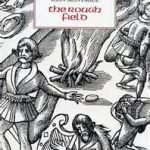 Gareth Browne on his vast estate, which was also a game preserve with red deer vaulting about, hares quivered in their meaze, ravens, badger, peacocks and foxes, grouse a-plenty, a partridge striding right through the door of the gamekeeper’s lodge where we were housed and cocking its head, as if to investigate what I was doing with my stick pencil scratching on paper at the trestle table. What I learned in the long late-night discussions, besides the volatile politics of Irish literature, included the history of the traditional Irish music, spearheaded by the Chieftains, who were conjured backed (with the other artists of Claddagh Records) by Gareth himself. The big house was under renovation, so Gareth occupied the servants’ house, the servants the gatehouse, John, Liz and I the pristinely luxurious two-bedroom cottage a mile or so of twisty mountain road from the main compound. There, as at home and everywhere I ever traveled with them, John and Elizabeth rose fairly early and sat silently across a table from each other to write. It was high discipline and deeply rooted harmony, and I have more than once seen each raise eyes to glimpse the other, smile then return to work, recharged. I had not seen love like that before. I remember that sojourn well for those mornings and the music and poetry of the evenings, but also because a certain actress invited Gareth and Company up to the Sally Gap, where she was filming Friel’s Dancing at Lughnasa. Later, the magnificent raconteur Michael Lindsay-Hogg (director and Orson Welles’ son) took us out to dinner, and on Sunday we learned of the death of Princess Diana, which put the whole cadre into a dark place, John especially. He kept shaking his head and mumbling about how hard she tried to be both regal and natural, and how the effort tore her asunder.
Gareth Browne on his vast estate, which was also a game preserve with red deer vaulting about, hares quivered in their meaze, ravens, badger, peacocks and foxes, grouse a-plenty, a partridge striding right through the door of the gamekeeper’s lodge where we were housed and cocking its head, as if to investigate what I was doing with my stick pencil scratching on paper at the trestle table. What I learned in the long late-night discussions, besides the volatile politics of Irish literature, included the history of the traditional Irish music, spearheaded by the Chieftains, who were conjured backed (with the other artists of Claddagh Records) by Gareth himself. The big house was under renovation, so Gareth occupied the servants’ house, the servants the gatehouse, John, Liz and I the pristinely luxurious two-bedroom cottage a mile or so of twisty mountain road from the main compound. There, as at home and everywhere I ever traveled with them, John and Elizabeth rose fairly early and sat silently across a table from each other to write. It was high discipline and deeply rooted harmony, and I have more than once seen each raise eyes to glimpse the other, smile then return to work, recharged. I had not seen love like that before. I remember that sojourn well for those mornings and the music and poetry of the evenings, but also because a certain actress invited Gareth and Company up to the Sally Gap, where she was filming Friel’s Dancing at Lughnasa. Later, the magnificent raconteur Michael Lindsay-Hogg (director and Orson Welles’ son) took us out to dinner, and on Sunday we learned of the death of Princess Diana, which put the whole cadre into a dark place, John especially. He kept shaking his head and mumbling about how hard she tried to be both regal and natural, and how the effort tore her asunder.
I’m aware of the halo effect and how it can creep in, but John could be persnickety and combative, too, rantish and sly, stubborn, bitter over his position on the bardic totem pole (like nearly every poet I have ever met, Mirror Man included), but these were not the modes I most knew him in. He was generous, courtly (approaching condescension on occasion), witty, mischievous, inquisitive, resourceful, erudite. His daughter Oonah said of him: “He was a country boy, and mother put the manners on him.” So, a culchie trafficking among the city mice, the cosmopolitans, the cognoscenti, the opulent and silver-spooned. I have often seen him in the role of peacemaker and messenger, and a couple of the poets in their obituaries said that, in his last decade, he had reconciled with the higher esteem of his younger friend Heaney enjoyed and praised his Ulster countryman with no sign of irony or puckishness.
To the point of his graciousness: when I first met John, I knew little of his poetry but had read Bitter Harvest: An Anthology of Contemporary Irish Verse from Scribners. Of course, it contains many splendid poems by poets from Heaney, Longley, Boland, McGuckian and Muldoon. Montague as well, but 90% were men, and I had fallen into step with some of the omitted Galway women I knew and had cultivated an unearned partisan stance. After his presentation and reading, he came over and asked me if he could sign a copy of the book for me, but I was quippish and rude, saying something about gender and how it was a wonder the Irish even managed to reproduce with such odds. Awful, I know.
 Later, in the pub, I was sitting alone, rehearsing my feeble wit and lack of tact, when he came to my table and asked, “So who are you yourself, anyway?”
Later, in the pub, I was sitting alone, rehearsing my feeble wit and lack of tact, when he came to my table and asked, “So who are you yourself, anyway?”
“I’m nobody, who are you?’” I Dickinsoned him.
“Ah,” he replied, “and where are you from, Nobody?”
“Georgia, Carolina, Alabama.”
“The South. I see. Well, I’m John from County Tyrone, the North, but also from right here and right now.” He extended his hand. “Can I stand you a pint?”
I was ashamed, but that was not his aim. Though we often disagreed and jousted, never again – in Albany or Rockbridge County, in Allihees or Ballydehob or Youghal or Dublin – did a hard word between us manage to outlive the sentence that followed it.
A prodigious lover of spirits, John once in Roundstone asked the woman behind the bar for a whisky. “Large or small,” she inquired. “My dear lady,” he responded, “There is no such thing as a large whisky.” On another occasion, as we sat in his kitchen garden in the late summer twilight, John opened a fresh bottle of Bushmills. It was just dark enough for the odor of the basil in the mozzarella and the olive oil scent to eclipse the work of the eyes, but I heard the snap of the separating rings on the bottle neck and smiled. My expression must have altered a fair amount when John tossed the cap over his shoulder into the weeds. I knew it would be a long night and a hard morning, but we did take a walk down the boreen, and atop a signpost saw a female white owl. It was a small snowy, whose ilk I was never going to see in the wild in my life if not right then and right there. I stared like a child, and John whispered, “Bride of the dead, if she speaks, don’t answer.” I can close my eyes and see it still.
 This was the Montague I knew, who always wrote brief occasional poems on the flyleaf or title page of the volumes he autographed for me. I suppose my favorite is in The Rough Field, which is English for his true hometown, Garvaghey, garbh achaidh.
This was the Montague I knew, who always wrote brief occasional poems on the flyleaf or title page of the volumes he autographed for me. I suppose my favorite is in The Rough Field, which is English for his true hometown, Garvaghey, garbh achaidh.
For Rod Smith,
Mac Gobhann.
the poet himself,
this long song
of wrong,
from the Bard of Tyrone!
Mac Taidgh,
Still sailing on – Letter College, Ballydehob, Autumn ‘97
Like the shagbark in the woods, he had heart and vigor, and now he has fallen. As I said, Bris-Mo-Croi.
[Next week’s blog will display a few of John Montague’s poems and a brief introduction to the nature and force of his poetry.]

